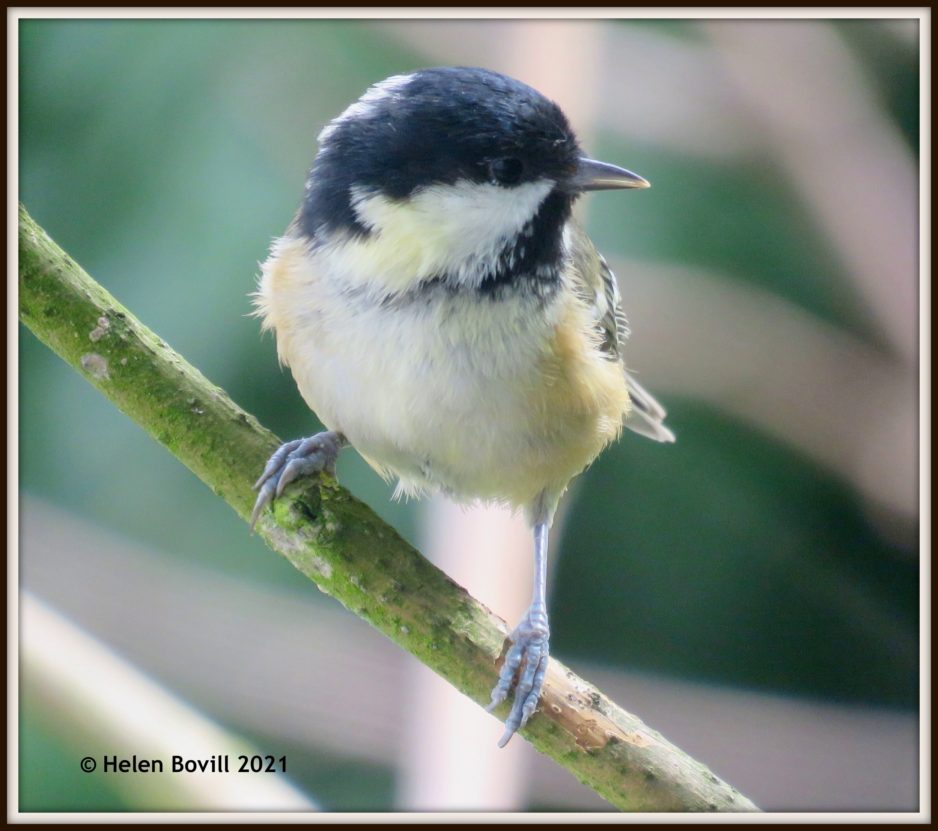August was a quiet month, weather-wise, with no extremes of heat, cold or rain but with plenty of dull days. Pretty much a typical summer month in these parts! Summer Wildlife
Birds
It seems to have been a good year for the cemetery’s birds, with plenty of young ones around. All the cemetery’s Tit species have bred successfully – Long-tailed, Blue, Great and Coal (pictured above). There are some young Blackbirds around, and I saw a young Song Thrush too – its tail feathers will appear later but it is still able to fly without them.
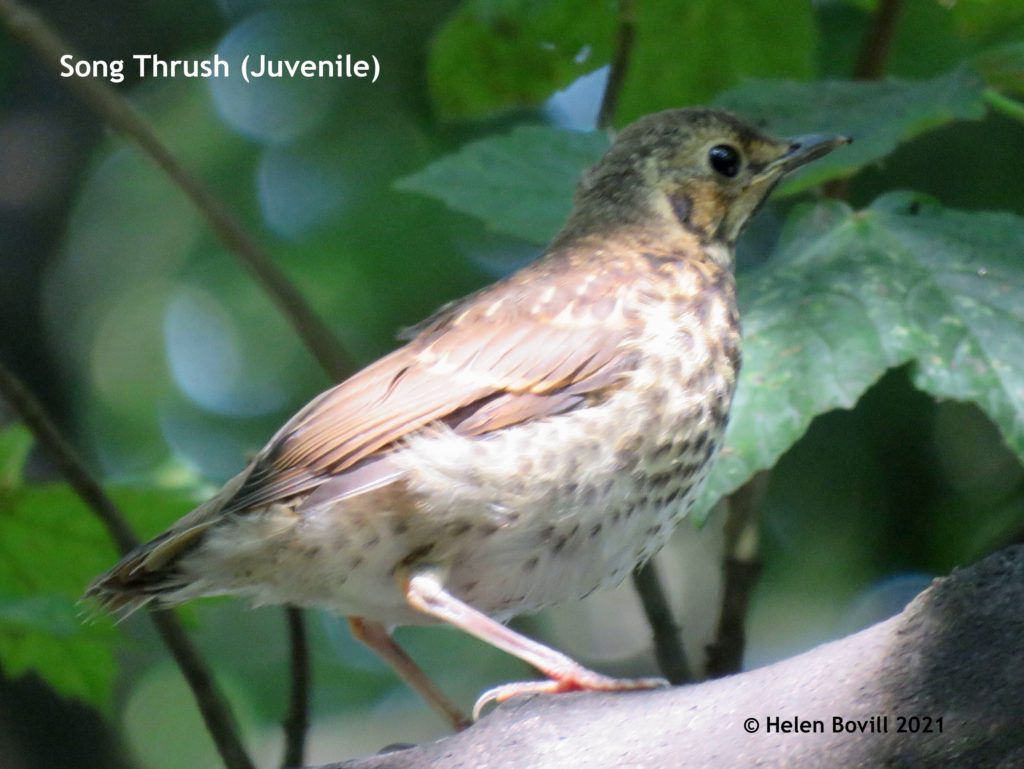
The best, albeit brief, sighting this month was a pair of Bullfinches but I didn’t manage to get a photograph of either of them. The young Goldfinches of last month’s report are doing well and starting to feed independently.
There are plenty of Chaffinches around and these are easy to spot, especially the males with their pinkish-brown feathers. The females are much duller shades of brown and can sometimes be mistaken for Sparrows. But male and female Chaffinches have white feathers in their wings which make them easily identifiable in flight.


I find it fascinating that the males and females of some bird species have distinctly different plumage – for example, Chaffinches and Bullfinches. This is known as sexual dimorphism. Their differences are quite obvious to see. However, the differences between male and female Goldfinches are much more subtle to the point of them being almost identical. I would not be able to say with confidence what sex the Goldfinches of last month’s report were!
Butterflies and other insects
It has been a very quiet month for butterflies. One of my neighbours has a huge Buddleia in her garden which is normally teeming with butterflies in August. I have only seen a couple on it so far and this lack of activity is reflected in the cemetery. I caught brief glimpses of a few White butterflies (I was unable to tell which species) and I saw a Holly Blue flying high around some Ivy.
The most common butterfly species in the cemetery is the Speckled Wood and on sunny days there are usually a few around. They flutter around each other in the air and then spend time basking in the sun. This one was in the Quaker Burial Ground.
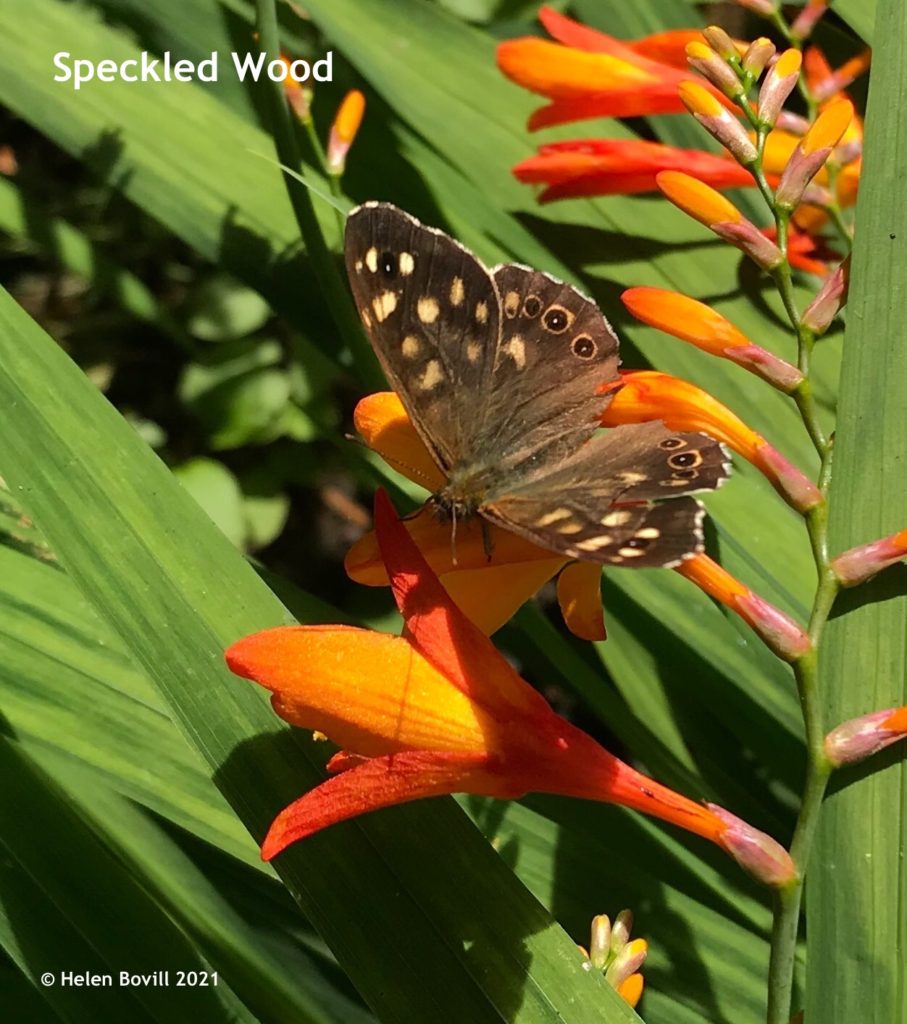
There are Ladybirds and Hoverflies around too but not in great numbers.

Flowers and other plants
The Cow Parsley and Wild Garlic has died back completely to the point where it’s hard to see where it once grew. Any plants now in flower that look a bit like Cow Parsley will most likely either be Hogweed, which is quite a tall plant, or the lower-growing Wild Carrot.
I struggled to find anything in flower to show you this month. The cemetery is still very green though! I did manage to find a few Buttercups, Herb Robert, Nipplewort, Great Willowherb and Feverfew. The berries are now starting to appear on the Snowberry bush but it is still in flower.
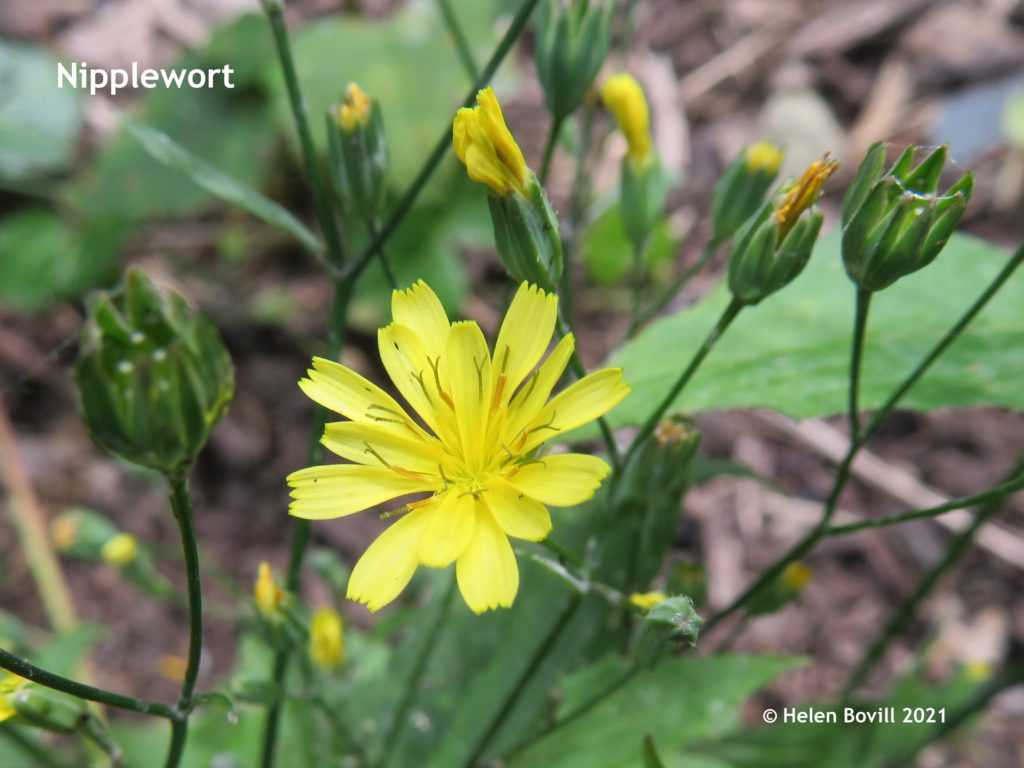


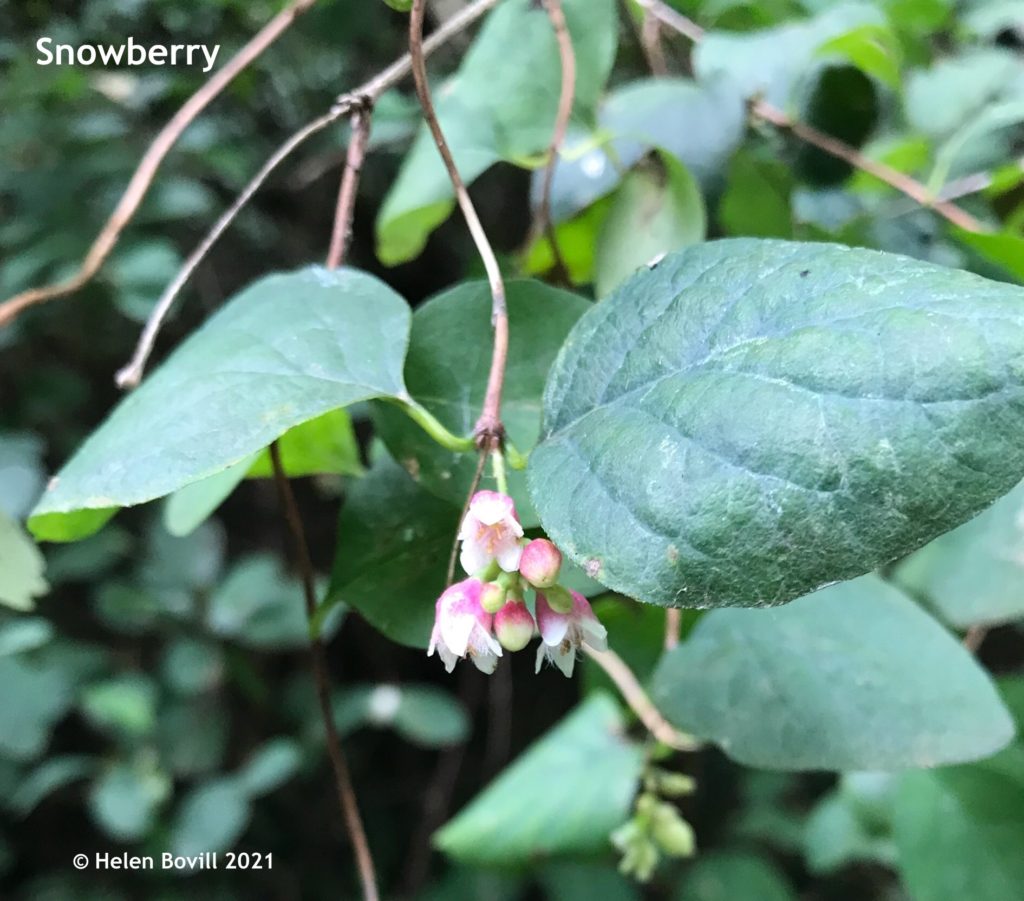
My main aim is to write about the wild flowers and plants in the cemetery. This section of the newsletter is called Cemetery Wildlife after all! But many of the trees and shrubs growing in the cemetery are there because of what was planted in the past. They have now become naturalised so I will not draw any distinctions between these and the wild flowers. Regardless of whether or not they are native, they still have value to the cemetery wildlife.
The volunteers will only be planting native species in the cemetery, such as a recently planted English Oak. Any wild flowers to be set will be native species that will blend in with their surroundings and complement what is already growing there.
The situation in the Quaker Burial Ground is slightly different because this area is owned by the Quakers under a long lease. They have requested that the Friends of Hull General Cemetery manage this area on their behalf. It is still in a conservation area where the same considerations apply with regard to the felling of trees and so on. But we have been able to set some new shrubs and plants that are not necessarily native species. However, we will also be planting some native species whenever we can.
Mushrooms
I have not seen any fresh large specimens this month, but there are still plenty of tiny mushrooms to be seen growing on the ground. Given that the footpaths are covered in wood chippings this is not unexpected!
Mammals
I have no new Fox or Hedgehog sightings to report, but there are always some Grey Squirrels around and these can be seen almost every day. There will always be someone who doesn’t like them of course. But I never tire of watching them chasing each other up and around the trees, or simply posing on the ground. And what child doesn’t love seeing them during family walks through our favourite cemetery?
The Grey Squirrel can vary in colour quite a lot – this one has a brilliant white chest and mainly grey/brown colouring. But some Squirrels can have more gingery hairs and very pale ginger chests.
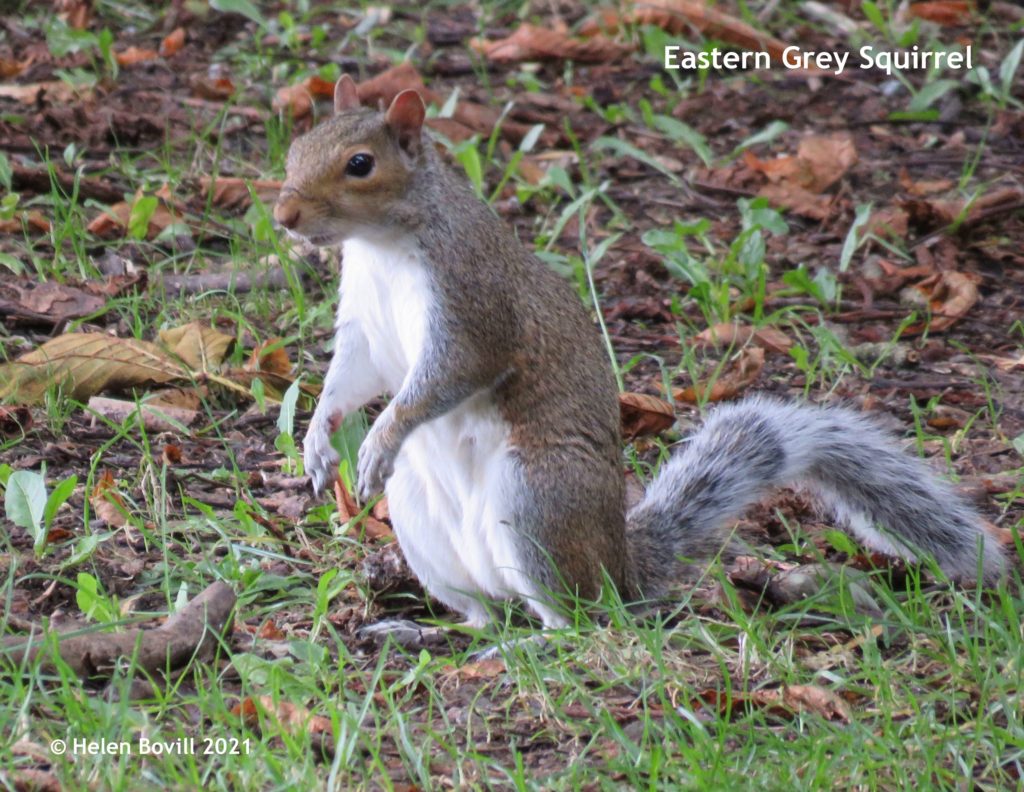
Conclusion
A rather uneventful month for the cemetery wildlife, with the dull and cooler days perhaps accounting for the low numbers of butterflies on the wing. The grass verge on Spring Bank West still doesn’t contain many flowers and this will have affected butterfly numbers too. But the birds are around in good numbers. Berries are now starting to appear on the bushes so they will have plenty of food to keep them going as we head into September. Dare I say that it is starting to feel slightly Autumnal already?


